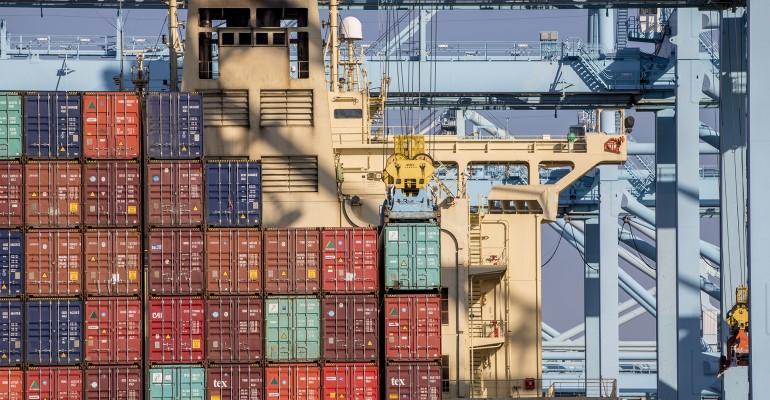Linerlytica, however, reported this week that “the stage for a series of larger rate hikes in May” has been set by the third straight increase in the Shanghai Container Freight Index (SCFI).
“Capacity utilisation is tightening across all main trades on stronger market demand, which will aid carriers’ GRI [general rate increase] efforts,” said the analyst.
Dynamar reports a confusing rate scene with the Ningbo Containerized Freight Index (NCFI) showing a decline since Chinese New Year.
“Rates were in slight positive territory before the Lunar New Year but have come under pressure since then with the overall index -13% on its year-start position come mid-April,” said Dynamar analyst Darron Wadey.
“For individual trades there were significant differences though, with Europe/Mediterranean indices averaging -23% whilst intra-Asia equivalents were +22% up, on average,” he added.
Meanwhile, the China Containerized Freight Index (CCFI), which Dynamar says is “more than spot rates, is usually less volatile than other indices, was around 60% up for February, but it too has calmed down to +30% up two months later, according to Wadey.
“So, a similar pattern to the NCFI of growth and fall back, it’s just that the severities are different. Here though, the Europe/Mediterranean trades were +54% up on the year start (average of two) whilst intra-Asia routes were only marginally better (also average of two), In other words, the opposite of the NCFI experience,” explained Wadey.
Drewry’s World Composite Index (WCI) is more in line with the NCFI and CCFI indices, with analyst Simon Heaney telling Seatrade Maritime News that the index has been on a “12-week skid”.
“The WCI has been declining week-on-week since early February,” said Heaney, “Average rate declines were $94 per 40ft in February, that accelerated to $141 per 40ft in March but the rate of decline has again eased to an average of $70 per 40ft this month.”
Drewry and Linerlytica diverge significantly over the transpacific contract rates currently under negotiation. Linerlytica claims contracts “are settling 10-20% above last year’s levels, with the current spot rate levels pushing shippers to conclude negotiations at the higher rates.”
Drewry said its Shipper Benchmarking Club, which allows shippers to anonymously divulge contract rates, is showing a marked year-on-year decline, though Heaney cannot divulge the amounts he said they were “definitely lower”.
Heaney said that Asia to Europe rates are normally negotiated earlier than on the Pacific and the contract discussions had all but ended before the Red Sea crisis began, so carriers could not benefit from the spike in spot rates.
Shipbroker Braemar added: that headline freight indices are not displaying a surge in spot rates right now.
“The latest surge in spot earnings, driven by Red Sea avoidance, peaked in February 2024. Since then, a gentle erosion of spot rates has been in play,” said Braemar researcher Jonathan Roach.
He added: “We would expect freight rates to remain elevated compared to pre-Red Sea avoidance at the back end of 2023. However, with the increasing weight of the heavy newbuilding program in full force, a continued but controlled softening of spot rates is expected in the short term.”
This view is, again, not mirrored by Linerlytica, who take the view that new vessel deliveries which are continuing at pace, more than 300,000 teu per month according to the analyst, will be deployed on Red Sea diversions and the additional summer service deployments, which will “continue to soak up all available supply”.
The number of ships diverted to the Cape route remains at 4.6m teu and is expected to break through the 5m teu mark in the coming weeks. “The Cape diversion continues to be the main driver behind the absorption of the active fleet,” said the analyst.
Heaney, however, said that the glut of newbuildings and the existing over-capacity were offset by the initial concern as the Red Sea crisis began.
“Panic saw rates spike at the beginning of the year in what was a kind of Covid PTSD, but then the market adjusted to the new normal and saw there was sufficient surplus capacity to cope,” explained Heaney.
Where both Drewry and Linerlytica agree is that the charter rates are holding up, with the Hong Kong analyst saying charter rates are still rising for all vessel sizes apart from the smaller sectors below 1,200 teu.
Heaney confirmed that in his view the charter market was “just about holding up” but pointed out that there was normally a correlation between spot rates and charter rates, which was now out of synch.
Copyright © 2024. All rights reserved. Seatrade, a trading name of Informa Markets (UK) Limited.
Add Seatrade Maritime News to your Google News feed.  |

